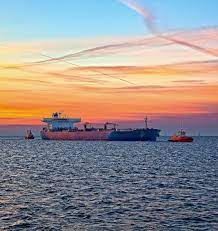From 1 January this year, global shipping is now a part of the European Union’s Emissions Trading System (EU ETS), one of the Union’s main tools to curb greenhouse gas emissions. And whilst it is a significant policy shift that will boost the sector’s decarbonisation efforts, it also brings a wave of challenges and opportunities for ports and shipping companies.
Ripple effects
One of the major concerns about the extended EU ETS in maritime transport circles is its potential influence on the routing decisions shipping companies make. We could see a strategic increase in stops at additional or alternative ports, particularly those outside the EU, in a bid to minimise emissions liabilities under the new regulations. And that redirection of traffic could trigger significant shifts in trade patterns, and a significant impact on non-EU ports and terminals.
The designation of certain ports outside the EU ‘Neighbouring Container Transshipment Ports’ (NCTPs) plays a crucial role in this context. Such designated ports will not be considered as ports of call for the purpose of emissions calculations under the EU ETS, but their designation raises concerns about competitive disparities and the need for infrastructural adjustments to handle potential changes in trade volumes.
The ripple effects of the ETS expansion are also expected to be felt within the EU itself as shipping companies consider re-routing their vessels, resulting in decreased traffic and activity at EU ports, especially where hinterland cargo can be diverted to ports outside the Union.
According to a new report by HFW, entitled ‘EU Emissions Trading System: Evaluating the Potential Impact on Container Ports and Terminals’, any such shift in shipping routes could have major economic and employment implications. Amendments could be added to close the loophole of cargo being transported over land in to avoid the need to meet the new requirements.
Green pioneers
On the other hand, however, the change presents a unique opportunity for EU ports to become pioneers in accommodating greener shipping practices.
Growing demand for alternative fuels, such as LNG, methanol, and ammonia, is pushing ports to adapt and establish themselves as hubs for eco-friendly bunkering operations.
The Port of Antwerp-Bruges is aiming for climate neutrality by 2050 and has ambitions to become Europe’s leading import hub for green hydrogen. It is investing in the import of renewable energy to supplement the local production of green and blue hydrogen to facilitate a robust supply of green energy for Europe.
The Port of Rotterdam Rotterdam’s Port Authority has already formed coalitions with ports like Singapore and Gothenburg to create ‘Green & Digital Corridors’ to achieve CO2-neutral and digital supply chains. It is also working with partners on a large-scale hydrogen network through the port complex including plans for an Air Liquide CO₂ capture facility as well as an ExxonMobil pilot plant using carbonate fuel cell technology.
In Sweden, the Port of Gothenburg has ambitions to be the world’s most sustainable port, reducing CO₂-emissions by 70% until 2030. More than SEK 600 million is being invested in developing fossil-free logistics chains and future energies for a sustainable future. It also has plans, in partnership with Norwegian energy company Statkraft, to construct a hydrogen production facility at the port.
New era
“The extension of the EU ETS to maritime transport heralds a new era for the shipping industry,” says Thomas Okbo, GAC Group Vice President – Europe & Africa. “And while it poses challenges in terms of operational adjustments and potential shifts in trade patterns, it also opens doors to innovation and sustainability. Ports and terminals, whether in the EU or beyond, need to strategise and adapt to this changing landscape.
“For ship owners and charterers that consistently transit in and out of the EU, it is vital to understand the new requirements.
Thomas Office 9672 Final Web Size
“Fortunately, GAC’s extensive network of offices across Europe is on hand to support vessels ahead of any docking procedure, ensuring the vessel is aware of and how to comply with all manner of regulations, including EU ETS.
“Our teams are fully up to speed with the new rules and how it will impact our customers going forward.”
Embracing green technologies and practices will not only ensure compliance with the new regulations but also contribute to a more sustainable future for the maritime industry. As the industry navigates these new waters, proactive adaptation and forward-thinking strategies will be key to thriving in this evolving regulatory environment.
Source: Hellenic Shipping News





